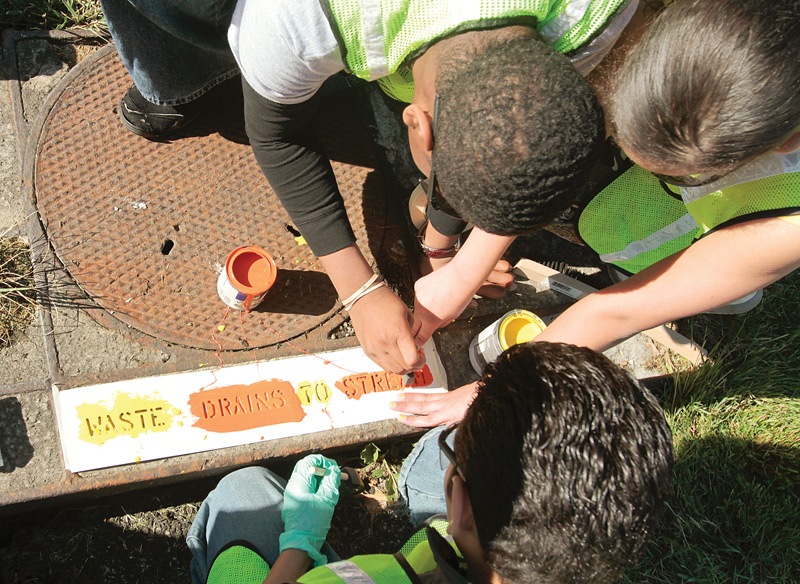Youngstown students learn community problem-solving


Students at the Rayen Early College Middle School paint messages on public property warning people not to dump gas, pesticides
By DENISE DICK
denise_dick@vindy.com
YOUNGSTOWN
Students painting messages on public property usually spells trouble, but in the case of a summer-enrichment program at Rayen Early College Middle School, the notes were to educate.
As part of an Earth Force project, the eight students enrolled in the program led by teacher Debbi Rogers learned about the dangers of putting fertilizer, gasoline, oil, grass clippings, insect repellents and other chemicals down storm drains.
“It goes out to the streams,” explained Robert Soto, 13, an eighth-grader at the school.
It can harm fish and animal life, added Maiesha White and Garfield Johnson, both 13 and in eighth grade.
Earth Force is a nonprofit group that focuses on community problem-solving particularly related to water.
To educate the neighborhood about the dangers of putting chemicals down the storm sewers, the students painted the message “Waste Drains to Stream” on storm sewers surrounding the Chaney Campus where REC is housed. A sticker affixed to the sewer also warns against dumping.
The students created brochures to educate the public about the
environmental hazard and delivered them to homes in the neighborhood.
“The neighbors have the brochures, so they know,” said Kathi Vrable-Bryan, director of the Mahoning County Soil and Water Conservation District which helped in the effort.
Trumbull’s soil and water conservation district also helped.
Seventh-graders Skylar Barcley, Mya Rios, Waldermar Cruz, Rachelle Firman and Isa-bella Miller round out participants in the program, which started with monitoring to determine pollutants in Ax Factory Run, a stream that runs within the city’s West Side.
Waldermar, 11, explained that the students were looking for organisms that are tolerant or intolerant to pollutants to determine the health of the stream.
Garfield said they found two leeches and crawfish in the stream.
“The crawfish look like little lobsters,” he said.
The presence of those organisms indicates a so-so bill of health for the stream.
“I don’t think the stream was that clean, but it was OK,” Garfield said.
Before the project, it never really occurred to the students that there were things you shouldn’t put down storm drains and the possible ramifications of doing so.
Something as simple as washing your car can pollute the water.
“Wash your car in a car wash — that’s really the best place,” Maiesha said.
Otherwise, phosphates from the soap pollute the streams, she said.
 43
43
